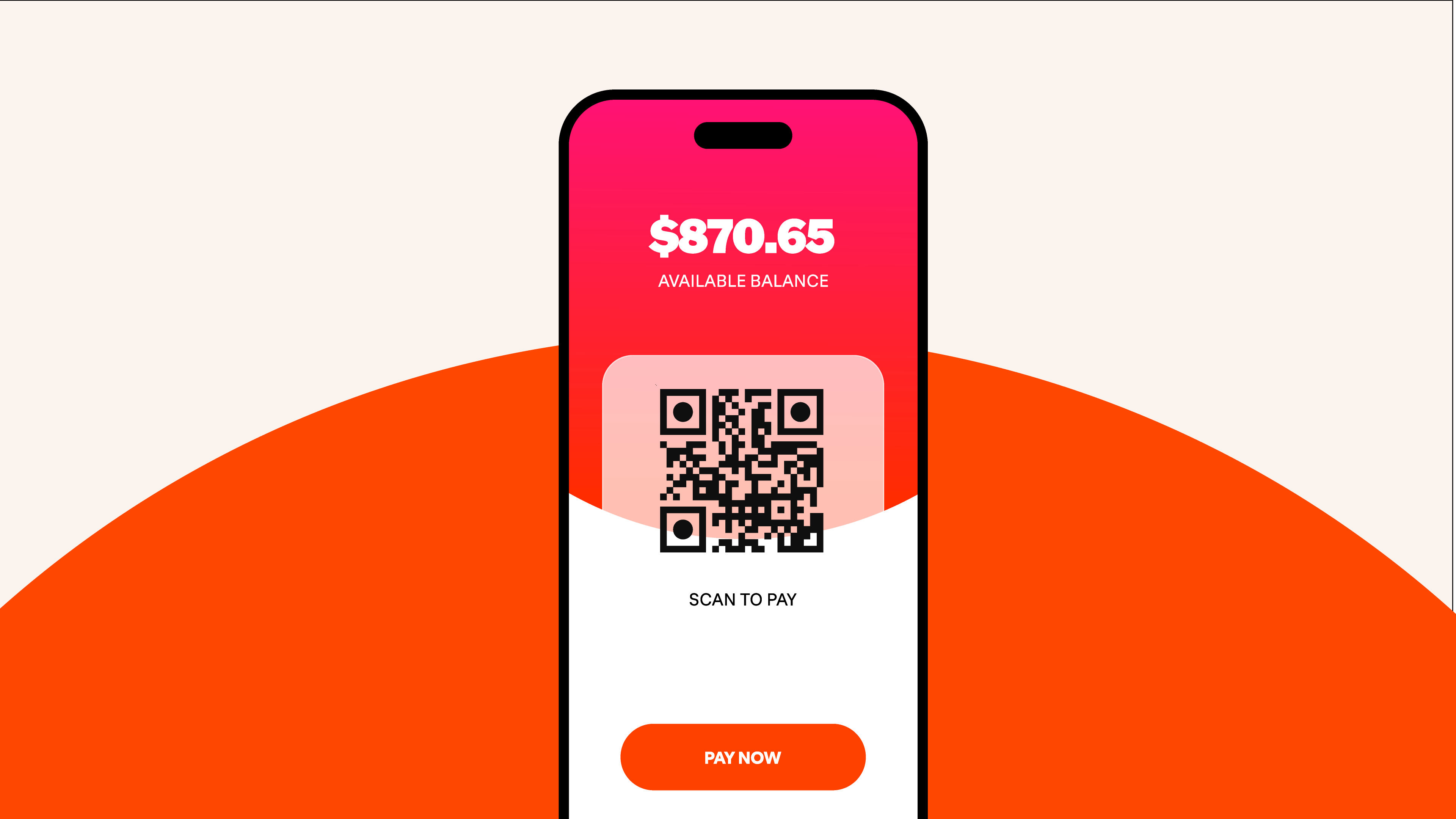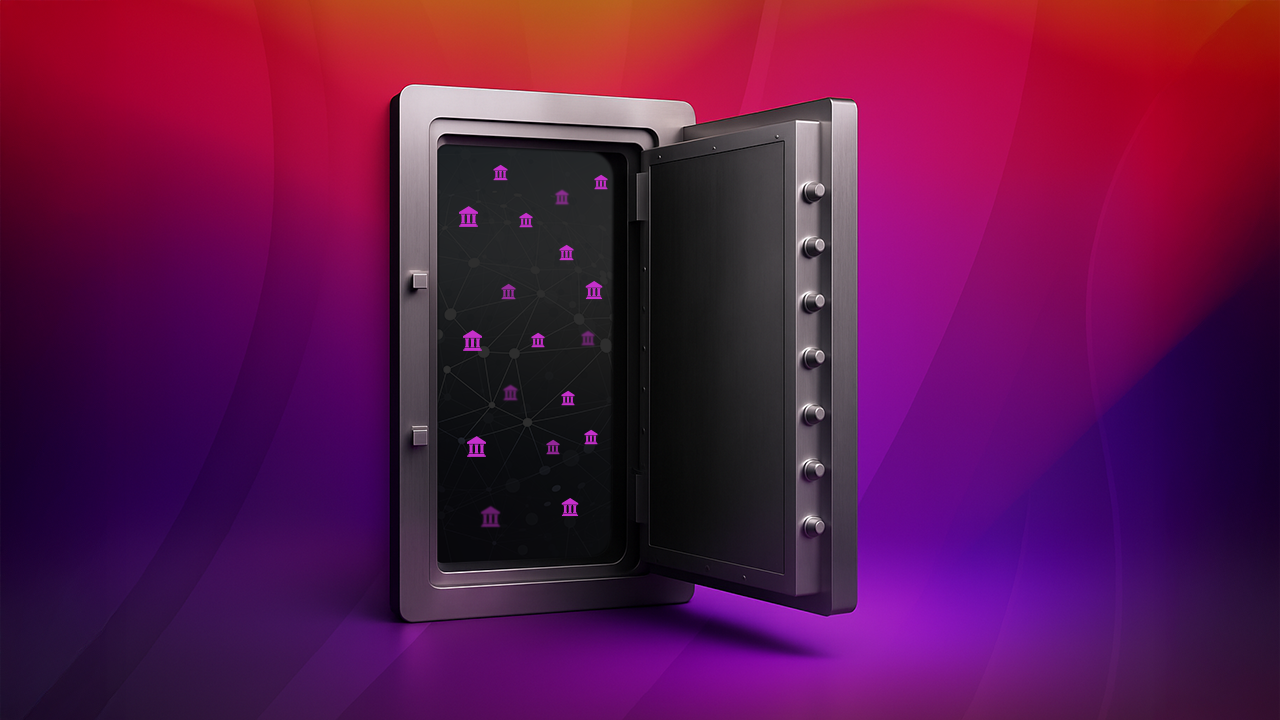
According to Mordor Intelligence, the QR market is projected to grow at a 17% CAGR between 2025 and 2030, reaching approximately USD 28.6BN by 2030. Adoption is strongest in Asia and Latin America, where QR codes have become the entry point to mobile wallets and instant bank-to-bank systems such as Pix in Brazil and UPI in India.
For merchants, QR has transitioned from a novelty to an essential bridge between online and offline commerce. A single code can be displayed on a shop counter, printed on a bill, or shown on a screen during a live stream, giving customers multiple ways to initiate payment.
What are QR payments, and how do QR code payments work?
A QR code payment is a transaction initiated by scanning a machine-readable code, usually with a smartphone camera. The code contains payment details that are read by a mobile wallet or banking app, allowing the customer to confirm and authorize the transfer. The core QR code payment process is simple:
Merchant displays a code → Customer scans it with their phone → App processes the payment without a card terminal
The two main QR models are:
Merchant-presented QR – The seller generates a code containing transaction details (amount, merchant ID). The customer scans and authorizes the payment in their app.
Customer-presented QR – The buyer generates a code from their payment app. The merchant scans it to request funds.
Use cases: Merchant-presented codes are common in retail and e-commerce, while customer-presented codes are often used in public transport systems or when customers show a QR for entry or ticket validation.
Static vs dynamic codes
- Static QR – Reusable, printed or displayed, customer enters amount. Simple and low-cost but harder to reconcile.
- Dynamic QR – Generated per transaction, embeds amount, simplifies reconciliation, enables refunds and receipts. Preferred for scale and accuracy.
Global adoption shows why these distinctions are important. India’s UPI QR has scaled to billions of monthly transactions by making dynamic codes standard, while Brazil’s Pix incorporates QR as the primary entry point for its instant payment ecosystem.
Both schemes show that QR codes offer more than just convenience and can materially increase acceptance rates and reduce processing costs compared with card rails.
For more on how QR fits into wallet adoption, see: Beyond Cards: The Rise of Mobile Wallets.
What are the benefits of QR code payments?
The main attraction of QR code payments for merchants is their ability to expand reach while keeping costs low. Customers benefit from speed and convenience, but the business case is strongest on the merchant side.
Key benefits include:
- Lower infrastructure costs – Unlike card payments, QR does not require specialized terminals. A printed code, a screen display, or an app integration is often enough.
- Broader reach – QR codes connect directly to mobile wallets and A2A systems that dominate in regions like Asia and Latin America. In markets such as China, QR codes are widely used for making and receiving payments, with even street musicians providing their QR codes to receive money.
- Stronger security – Payments are authenticated through the customer’s phone. As they often use biometrics, app PINs, or two-factor authentication, QR is inherently more resistant to fraud and chargebacks.
*For more on how local methods mitigate chargebacks, see our blog: How to Prevent Chargebacks
- Improved customer experience – The flow is quick and mobile-native. A single scan can replace card swiping, PIN entry, or manual data entry, reducing friction at checkout.
What are the disadvantages of QR code payments?
For merchants, the main challenges come from how QR is deployed in real markets, with key disadvantages including:
Fragmentation across markets – Every region has its own QR standard, from UPI in India and QRIS in Indonesia to DuitNow in Malaysia and SGQR in Singapore. For international merchants, managing this patchwork can increase integration costs and slow time-to-market.
Exposure to scams – QR codes can be tampered with, swapped at physical locations, or used in phishing-style attacks known as ‘quishing’. Without robust controls, merchants risk reputational damage if customers are misdirected.
Dependence on smartphones and connectivity – QR assumes the customer has a camera-enabled device, battery power, and a live connection, making it less reliable in low-connectivity or cash-reliant environments.
Limited uptake in card-heavy regions – In markets like the US and Western Europe, consumer habits are still tied to cards. Merchants in these regions who rely too heavily on QR may not see strong adoption.
Future developments could affect QR adoption
Particularly with central banks potentially tightening rules around interoperability and new technologies such as NFC or biometrics challenging QR in certain markets.
Merchants should plan for QR as essential today, while staying alert to how the landscape evolves.
For global businesses, these disadvantages and future developments don’t necessarily make QR a poor choice, but they do highlight the importance of choosing a processor that can unify multiple local standards.
Popular QR payment methods around the world
QR payments have become embedded into national payment ecosystems, particularly across Asia and Latin America. Each scheme reflects local regulation and consumer behavior, but together they show why merchants cannot treat QR as a one-off add-on.
China – Alipay and WeChat Pay
QR codes are the default for in-store payments in China, powering billions of transactions every month. Both platforms have since evolved beyond payments to become ‘superapps’, where the same QR scan can pay for groceries, book travel, or order food. For merchants, it shows how QR adoption can lock customers into ecosystems that handle different parts of daily life.
India – UPI QR
UPI has standardized dynamic QR for merchant payments, embedding the transaction amount in each code to improve reconciliation and enable refunds. UPI now processes more than 10 billion monthly transactions, with QR a major driver of that growth.
Thailand – PromptPay QR
Developed by the Central Bank to support instant account-to-account transfers. Merchants display PromptPay codes at the point of sale because settlement is fast and the scheme is trusted nationwide.
Malaysia – DuitNow QR
Launched to unify competing QR systems under a single framework, DuitNow reduces complexity for merchants as one code accepts payments from multiple banks and wallets.
Indonesia – QRIS
A national standard that consolidates various QR schemes. Merchants, especially SMEs, benefit from easier onboarding and lower acceptance costs.
Singapore – SGQR
Created to merge more than 30 different QR payment options into one. Adoption has been steady because it simplifies checkout for both merchants and customers.
Brazil – Pix QR
Pix processed 42 billion transactions in 2023, with total value exceeding BRL 17 trillion, making it one of Brazil’s dominant instant payment systems. Merchants use Pix widely because payments settle in real time through the Pix infrastructure and because consumer adoption is high. Pix is frequently used via QR codes, among other access methods.
For international merchants, the variety of standards can be daunting. Each operates differently, yet customers expect them to work seamlessly, which is why QR must be seen in the context of cross-border payments. The real challenge is not issuing the code, but integrating multiple national schemes into a single, consistent flow.
Where to find QR code payment processors
The right partner for QR code payments will do more than just generate codes, it will handle the complexity that sits behind them. As each country has its own standards, compliance rules, and preferred customer apps, a processor must take on that complexity, so merchants don’t have to.
What to look for in a QR payment processor:
Coverage of local standards – Can they support national schemes like UPI QR, DuitNow, QRIS, SGQR, and Pix through a single connection?
Security and fraud controls – Do they protect against tampered codes, fraudulent redirects, and ‘quishing’ attacks?
Reconciliation and reporting – Can they handle refunds, digital receipts, and settlement reporting at scale?
Compliance and updates – Are they aligned with central bank requirements and able to adapt when schemes evolve?
Boku’s role
With Boku, a single integration allows merchants to access multiple QR ecosystems, from Pix in Brazil to UPI in India and PromptPay in Thailand. The same infrastructure that supports recurring payments and mobile wallets (as covered in Part 1 of this series) extends to QR, reducing cost and accelerating go-live.
For merchants, it means higher acceptance rates, lower reliance on hardware, and consistent fraud protection across markets.
QR code payments as a core pillar of local payment ecosystems
For merchants, the advantages of QR range from lower hardware costs and faster settlement to access to a customer base that prefers wallets or instant bank transfers over cards. The scale of adoption in markets such as China, India, and Brazil shows how QR can improve acceptance rates and reduce processing costs.
Boku helps merchants capture these benefits through a single integration that can connect to multiple QR standards worldwide. Wherever you’re located, we make QR acceptance part of a broader local payments strategy, alongside recurring billing and mobile wallets.
This article is Part 1 of our four-part payments series. This instalment has shown how QR opens the door to wider customer reach in emerging markets. In the next article, we will explore the world of embedded payments.
Popular articles
No items found.
Popular articles
No items found.


.jpg)
.png)


.png)








